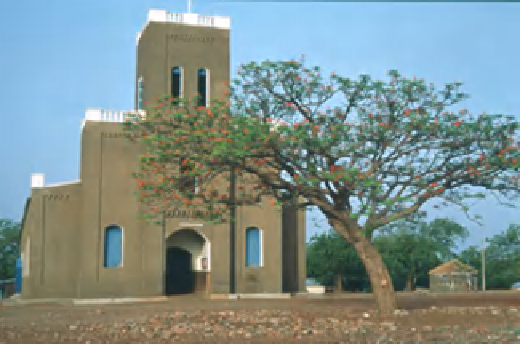Environmental Engineering Reference
In-Depth Information
11.2. Research on earthen plaster stabilized with bitumen and polychrome
decoration: Navrongo cathedral, North Ghana
11.2.1.
Introduction
In the 1970s, the outside of Navrongo cathedral (built in 1920) was covered with
a plaster composed of a mixture of earth and bitumen in order to better resist
weathering (see Figure 11.15). Today, the renovation of this protective surface
system raises a number of questions. Most studies related to the use of bitumen are
in the context of adobe stabilization − in other words a stabilization of the full mud
brick where certain bitumen concentrations are recommended for use within the
adobe composition [FER 85, MCH 89]. Few data exist, however, for the use of
bitumen/earth systems as a plaster and protection layer, and therefore their
physicomechanical properties are still unknown. Indeed, what is the impact of the
plaster layer on water vapor permeability and will it allow the adobe to “breathe”?
What are the primary weathering sources? And finally, can an additional bituminous
paint layer improve durability of the plaster?
Figure 11.9.
Our Lady of seven sorrows cathedral,
Navrongo, Ghana (CRATerre 1999)
During the 1970s, in addition to the application of the earth/bitumen plater on the
external façades, amazing earthen decorated surfaces were set up inside the building
(see Figure 11.16).

